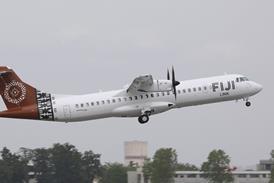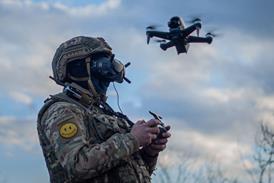No sooner was the ink dry on a contract for the next US presidential helicopter, a deal worth in excess of $6 billion to the successful US101 team, than industry's radar locked onto a fresh target of equally momentous proportions.
The US Air Force requirement to replace its ageing fleet of Sikorsky HH-60G Pave Hawk helicopters has been high on the agenda of the rotorcraft community for some time, but now the Personnel Recovery Vehicle (PRV) contest is about to take off in earnest.
July is pencilled in for the release of a formal request for proposals (RFP), which will outline in more detail the USAF's plans to introduce a next-generation helicopter. The initial phase of PRV will call for the acquisition of 141 aircraft, with a follow-on order of 60 helicopters to patrol the air force's missile sites also on offer.
With the competitive phase of the programme just around the corner, the rival bidders have a swathe of press conferences planned this week at Le Bourget to outline the relative merits of each aircraft.
If momentum counts for anything, then the force may be with the transatlantic alliance of Lockheed Martin, AgustaWestland and Bell Helicopter, which trumped Sikorsky in January to capture the 23-aircraft order in the Marine One presidential helicopter competition.
The same team, strengthened by two recent additions (see side panel) will be pushing hard for PRV, but this time there is more than one rival.
Once again Sikorsky, stung by the loss of its position as supplier of the presidential fleet, will be lobbying strongly for the S-92.
The Bell-Boeing joint venture intends to offer the CV-22 tiltrotor in the PRV competition, while Boeing is also expected to formally submit a bid based around the CH-47 Chinook. Boeing officials have not yet confirmed that the Chinook is a candidate for PRV, but they met with USAF officials in late April to discuss the suitability of the aircraft as a search and rescue platform. The move would inject a heavylift element into a competition previously restricted to two medium lift aircraft and a tiltrotor.

Advantages
Although the US101 team drew a line in the sand with their success earlier this year, the PRV contest is likely to be just as fiercely contested, with all four aircraft having advantages. As Lt Col Pat Bolibrzuch, PRV programme manager, says: "When you look at the four candidates, each of them actually has some area that's better than the next guy."
John Young, the US Navy's assistant secretary for acquisition, downplays the significance of the Marine One competition in shaping the outcome of PRV, but also outlines the spiral upgrade programme for the presidential fleet, a factor that will definitely favour the Lockheed Martin-led team.
The US101 is to gain a major engine upgrade, paid for by the presidential programme, that can be directly applied to the USAF's requirements for PRV. In addition, aspects of the mission systems being developed for Marine One can be carried over to the PRV programme.
Speaking on the eve of Paris, Steve Ramsey, Lockheed Martin vice-president and general manager for the US101programme, said the alliance's focus would be on 'mission capability'.
"When we were competing for the presidential helicopter there was a huge amount written in the media about the political side of things. Our focus was always on proving that the aircraft was right for the mission. It is exactly the same for PRV.
"We will be transferring the low risk approach we had to the VXX competition to PRV and we are comfortable with the timescales. PRV is running about a year behind the presidential helicopter." Whoever wins the competition will need to demonstrate that they are able to deliver a helicopter than can operate in a highly networked environment.
The initial aircraft must be equipped with an eight-channel joint tactical radio system communications suite, and include a system to closely monitor locations of friendly forces. The air force has also added a requirement for a laser-designation system.
The competitors will have 30-45 days to submit formal proposals from the date of the RFP. A contract decision is expected next February.
Source: Flight Daily News























